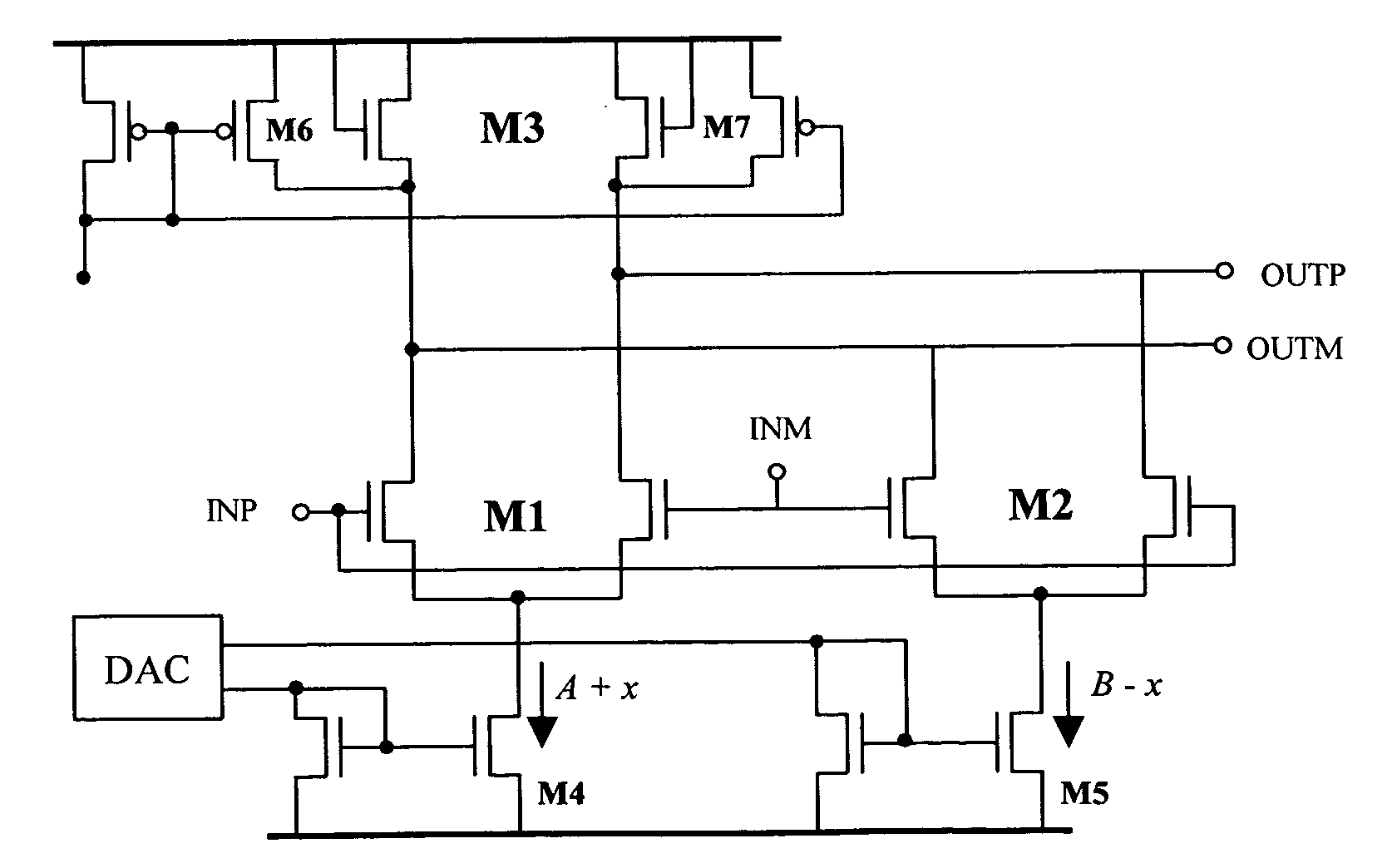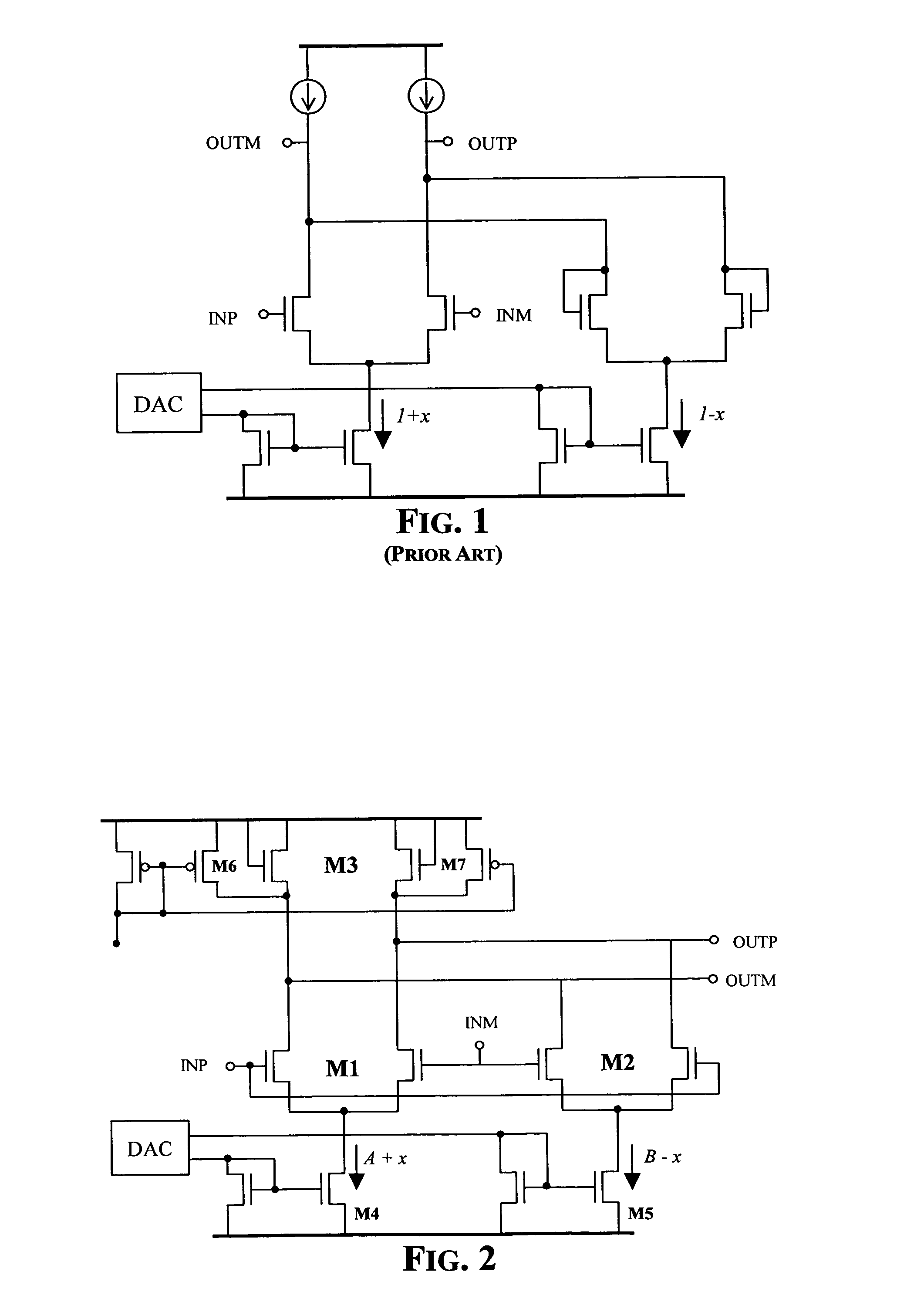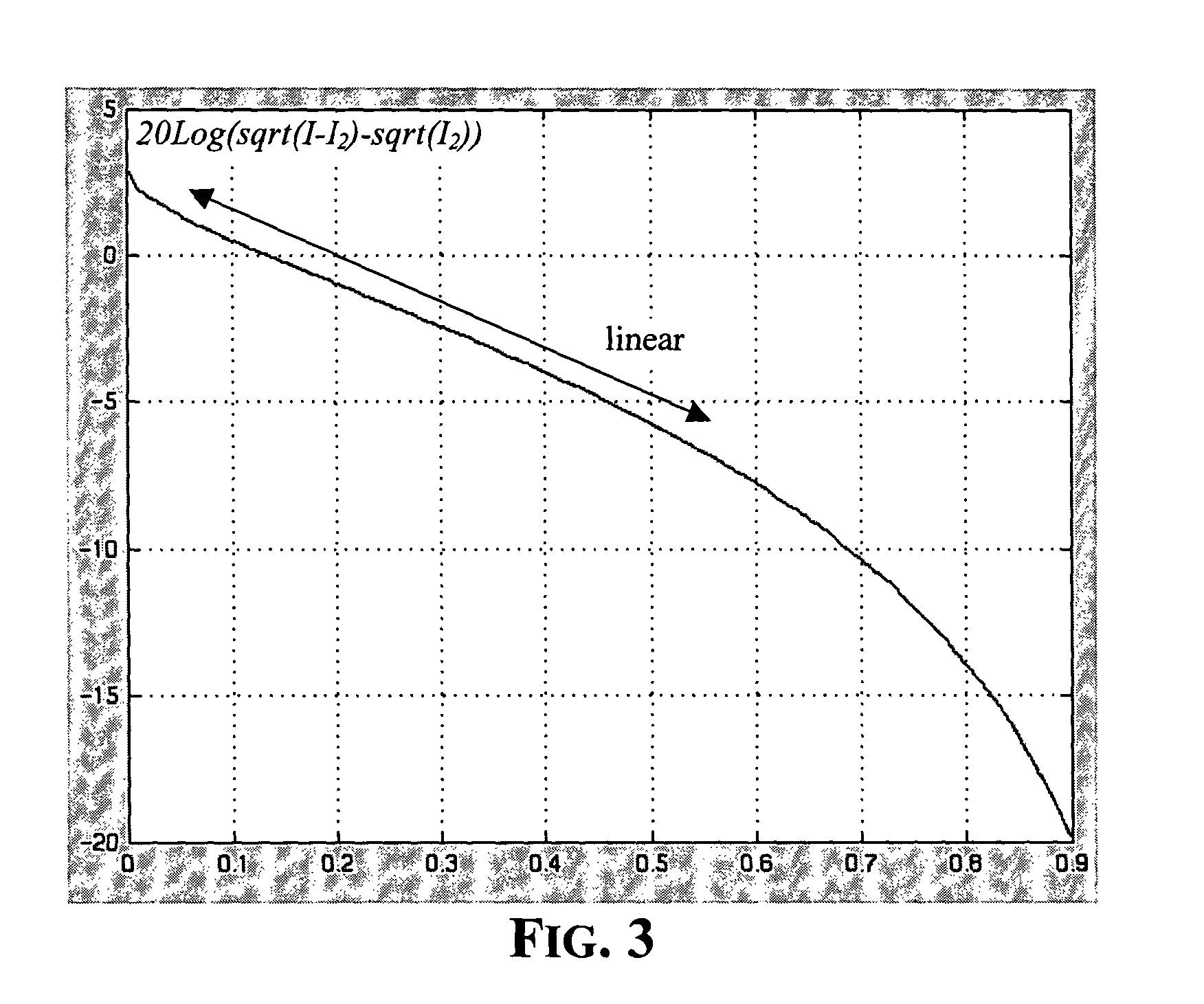Logarithmic linear variable gain CMOS amplifier
a cmos amplifier and linear variable technology, applied in amplifiers, dc-amplifiers with dc-coupled stages, analog and hybrid computing, etc., can solve the problems of bias current affecting the bandwith and linearity of the amplifier, and achieve the effect of adding complexity
- Summary
- Abstract
- Description
- Claims
- Application Information
AI Technical Summary
Benefits of technology
Problems solved by technology
Method used
Image
Examples
Embodiment Construction
[0015]As depicted in FIG. 2, the two differential transistor pairs M1 and M2, sharing the same diode-connected load transistors M3, are cross connected to the inpuit nodes INP and INM of the amplifier according to an essential feature of the circuit of the present invention.
[0016]The transconductance of the first input differential pair of transistors M1 is gm1, the transconductance of the second input differential pair of transistors M2 is gm2, and the transconductance of the diode-connected load transistors M3 is gm3. It may be demonstrated that the gain of the amplifier is given by the following equation:
[0017]Gain=gm1-gm2gm3=K1·I1-K2·I2K3·I3(2)
where Ki is the transistor's gain constant proportional its aspect ratio W / L; I1, I2 and I3 are the respective bias currents of M1, M2 and M3; and the bandwith is given by the following equation:
[0018]Bandwidth≅K3·I3π·Cout(3)
wherein Cout is the capacitance of the output node, referred to the virtual ground node of the circuit.
[0019]Customa...
PUM
 Login to View More
Login to View More Abstract
Description
Claims
Application Information
 Login to View More
Login to View More - R&D
- Intellectual Property
- Life Sciences
- Materials
- Tech Scout
- Unparalleled Data Quality
- Higher Quality Content
- 60% Fewer Hallucinations
Browse by: Latest US Patents, China's latest patents, Technical Efficacy Thesaurus, Application Domain, Technology Topic, Popular Technical Reports.
© 2025 PatSnap. All rights reserved.Legal|Privacy policy|Modern Slavery Act Transparency Statement|Sitemap|About US| Contact US: help@patsnap.com



